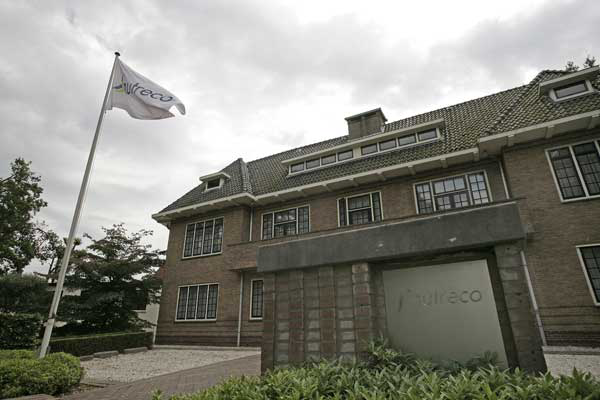Nutreco seeking expansion in Brazil, Russia and Asia

For Nutreco, there’s hardly any room for growth in Europe. The animal nutrition company therefore will focus on retaining market share, while achieving substantial growth in Brazil, Russia and Asia.
Nutreco’s aim is to expand its business in emerging economies and concentrate on selling products with added value. Over the last ten years, the animal nutrition company has been divesting its meat and breeding activities and did the same with its fish farming operation. The current strategy focuses on growth in fish feed, premixes and specialty feeds. As a result, the EBITDA is projected to reach the €400 million mark within five years. For 2012, the company shows a trading result of €260 million.
One of the trading companies within Nutreco is Trouw Nutrition, a manufacturer of premixes and speciality feeds. Trouw was in 2011 the number two brand in the world in this section. The company holds a strong position in Europe, especially in Spain, where Nutreco is market leader with premixes, speciality feeds, compound feeds and poultry meat. Over 30% of all Nutreco employees work in Spain.
Nutreco looks vulnerable, as the Spanish economy is currently in recession and the unemployment rate is above 20%. Jerry Vergeer, head of Nutreco’s global animal feed activities, said: “There are challenges in some markets, like Spain, where the overall economic situation has deteriorated.” By birth Canadian, Vergeer joined Nutreco when the company took over Maple Leaf Animal Nutrition back in 2007. He continued, “We are fully aware of the harsh economic circumstances for our customers, the farmers. Nutreco has the advantage of being the market leader in Spain. We do not predict a fundamental decline in demand for animal feedstuffs. We do have to cope with high and volatile prices for raw materials, however, which influences the operating margin. Then again, the entire market has to deal with that.”The poultry meat market is more cyclical. “Chicken meat is number one in Spain and probably the most cost efficient way of producing animal protein, as the feed conversion is better than with cattle or pigs. Even i
f I don’t think of the crisis, chicken meat will be the winning source of animal protein. It is not an easy market, nor is it a very complicated one given this overall principle.”
The company is looking for growth opportunities outside its traditional markets. In 2011, Western Europe accounted for half of the company’s total revenue in animal feeds, about 25% came from North America. “Europe and North America remain very important markets for us. Nutreco aims to move to products with added value for these markets, as they are saturated a goal of 1 or 2% growth of market share can be very ambitious.”
With its premixes and specialities, Nutreco aims to expand in three markets: Brazil, Russia and South East Asia, which includes China. The company now has a modest market share in these countries. Brazil is the world’s second-largest meat exporter and has a record of 9% of total trade in animal protein. Vergeer: “With the acquisition of Bellman in 2012, Nutreco is now into feedstuffs for cattle. Bellman is one of the five biggest suppliers of minerals for Brazilian cattle ranchers. The company has had a solid track record for twenty years, and has a strong group of clients.”
Demand for beef is still growing in Brazil. Vergeer says: “Brazilian farmers used in general grazing methods, but the sector is intensifying and so there is more need for additions to the feed. Besides Bellman, Nutreco has owned cattle feed producer Fri-Ribe since 2009 now for 97%. The availability of potential acquisitions was an important driver for Nutreco to grow in this field. In the future, Nutreco sees a role for itself being a big player providing feed stuff for pig and poultry farmers in Brazil.”
The Russian market has grown over the last decades to a size, triggering Nutreco not only to export products, but produce there as well. Nutreco is building a plant in Voronezh, in the South West of the country, which will produce 100,000 tonnes of premixes and speciality feeds a year. Vergeer says, “In Asia, the market should still be developed. Regional centres for research and development are crucial. Nutreco now owns R&D centres in Europe and North America, but we will add centres in Brazil and in Asia, probably China. ”Despite Nutreco’s second place on the world market of premix and speciality suppliers, the market is still fragmented. Vergeer says, “In a number of countries, our position is quite modest and we will have to deal with local or regional supplies, sometimes cooperatives. Nutreco prefers local management with a superior knowledge of the local market, which should be given the time to extend the positions. Farmers should feel that the company is really close to them.”
Vergeer says that the entire organisation of Nutreco is looking for ways to support local management, for example with new products. “Our size and global operation is a big plus, because we have more innovative, commercial and technical power than most regional players.”
 Beheer
Beheer





 WP Admin
WP Admin  Bewerk bericht
Bewerk bericht